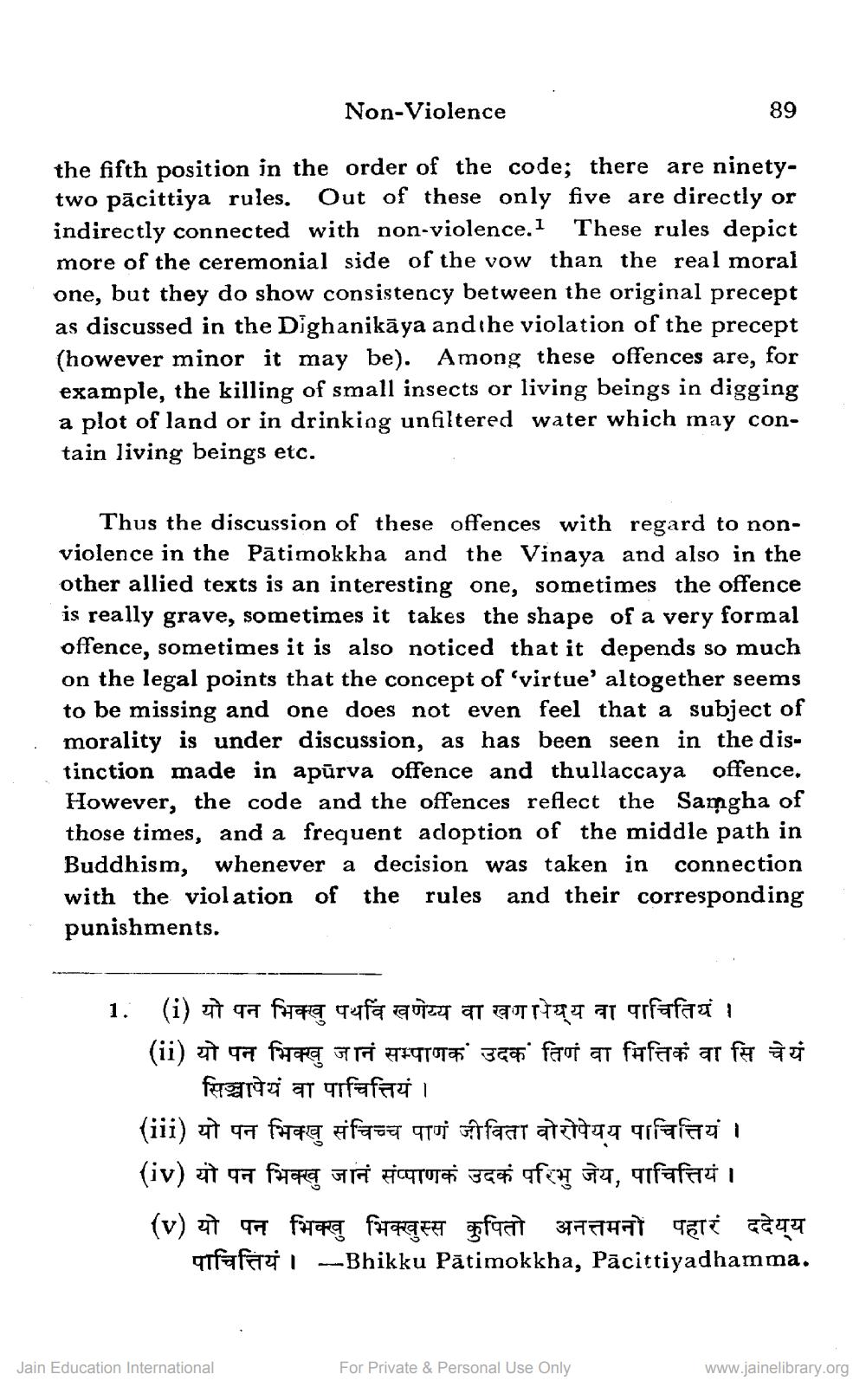________________
Non-Violence
89
the fifth position in the order of the code; there are ninetytwo pācittiya rules. Out of these only five are directly or indirectly connected with non-violence. These rules depict more of the ceremonial side of the vow than the real moral one, but they do show consistency between the original precept as discussed in the Dighanikāya and the violation of the precept (however minor it may be). Among these offences are, for example, the killing of small insects or living beings in digging a plot of land or in drinking unfiltered water which may contain living beings etc.
Thus the discussion of these offences with regard to nonviolence in the Pātimokkha and the Vinaya and also in the other allied texts is an interesting one, sometimes the offence is really grave, sometimes it takes the shape of a very formal offence, sometimes it is also noticed that it depends so much on the legal points that the concept of 'virtue' altogether seems to be missing and one does not even feel that a subject of morality is under discussion, as has been seen in the distinction made in apūrva offence and thullaccaya offence. However, the code and the offences reflect the Samgha of those times, and a frequent adoption of the middle path in Buddhism, whenever a decision was taken in connection with the violation of the rules and their corresponding punishments.
1. (i) u qa fora qufa autent at a ar arfafadi (ii) यो पन भिक्खु जानं सम्पाणक उदकतिणं वा मित्तिकं वा सि चेयं
सिञ्चापेयं वा पाचित्तियं । (iii) at 9H free #f972 qui etfaat atetana qfainal (iv) यो पन भिक्खु जानं संप्पाणकं उदकं परिभु जेय, पाचित्तियं । (v) यो पन भिक्खु भिक्खुस्स कुपितो अनत्तमनों पहारं ददेय्य
qfafaoi l-Bhikku Pātimokkha, Pācittiyadhamma.
Jain Education International
For Private & Personal Use Only
www.jainelibrary.org




